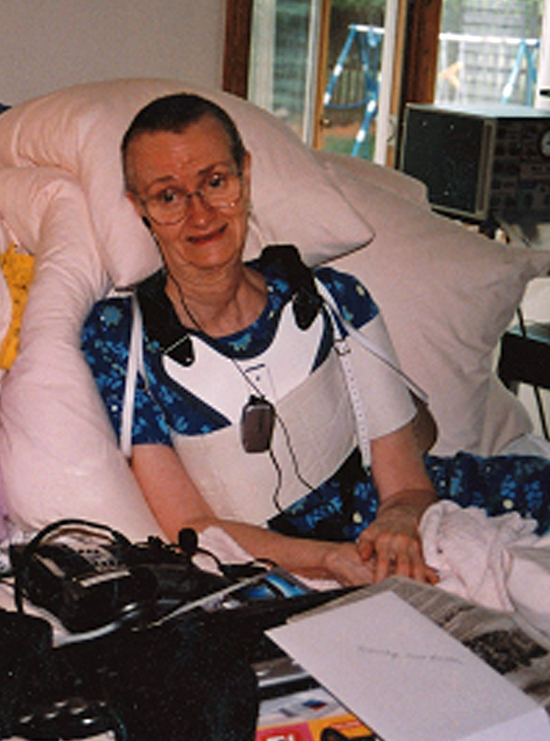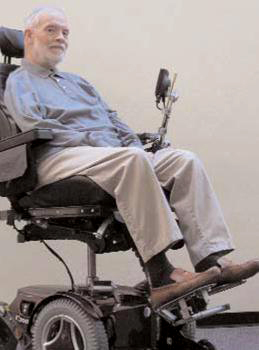Nancy Baldwin Carter
One day I was running wild through the exhibits at the Thayer County Fair in Nebraska, a typical eleven-year-old shrieking uncontrollably as the Octopus ride tossed me hither and yon, winning a kewpie doll pitching plastic balls through embroidery hoops. The next, I was in bed with the “flu.”
Read More…
Lawrence C. Becker
“You had polio? I thought they cured that."
If I had $10 for every time I’ve heard those words, I could sponsor a vaccination program in a village in some hard-to-reach part of the world. That would be a good thing. But polio is not “cured” by the vaccines—it is prevented. There’s a difference.
Read More…
Selma Harrison Calmes MD, Retired Clinical Professor of Anesthesiology, UCLA School of Medicine
INTRODUCTION:
This talk * will briefly review the process of anesthesia care, current anesthesia practice, and how these might relate to post-polio syndrome (PPS) patients having surgery. The goal is to make clear that proper preop planning allows post-polio patients to have surgery and anesthesia with a minimum of risk. Indeed, the risk of anesthesia is much, much less than the risk of death from an error while hospitalized.
Read More…
Why is it so hard to link up ahead of time with the anesthesiologist who will do my case?
Daily anesthesia staffing is a complex equation! It is extremely difficult to know ahead of time who will be doing which case on a particular day. There is a constant flux of anesthesia staff (people get sick), other needed staff such as techs, incoming emergency cases, obstetric anesthesia cases, cases may move from one OR to another and so on. And, anesthesia group size is increasing; it is not unusual to have groups of over 100 anesthesiologists.
Read More…
What’s new in anesthesia that I need to know?
This is a brief listing. Answers will be expanded as time allows in the session.
a. Better measurement of quality of care in anesthesia and better recognition of where problems are and how they could be improved.
b. Increasingly sophisticated knowledge of ventilation problems and better management of respiratory problems postop.
c. Recognition that many patients are left with residual neuromuscular block and the possible complications.
Read More…

